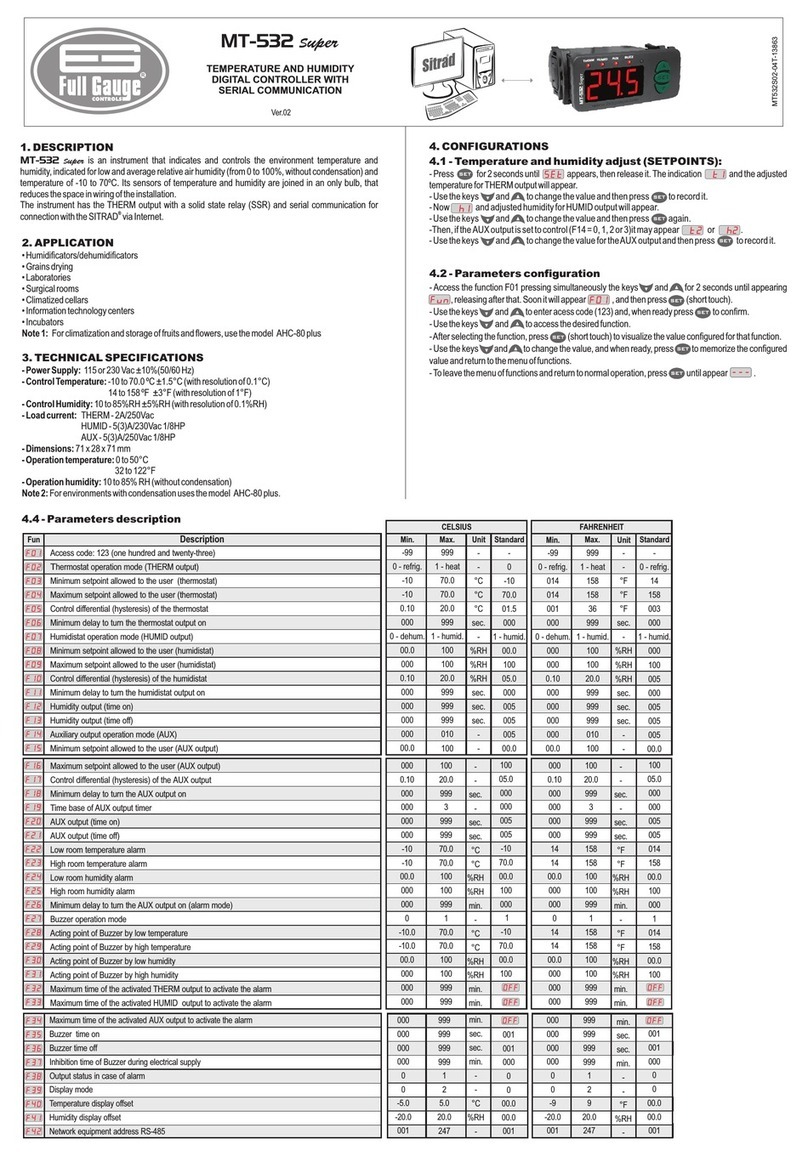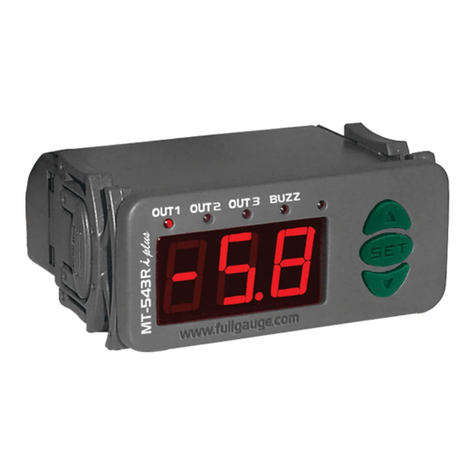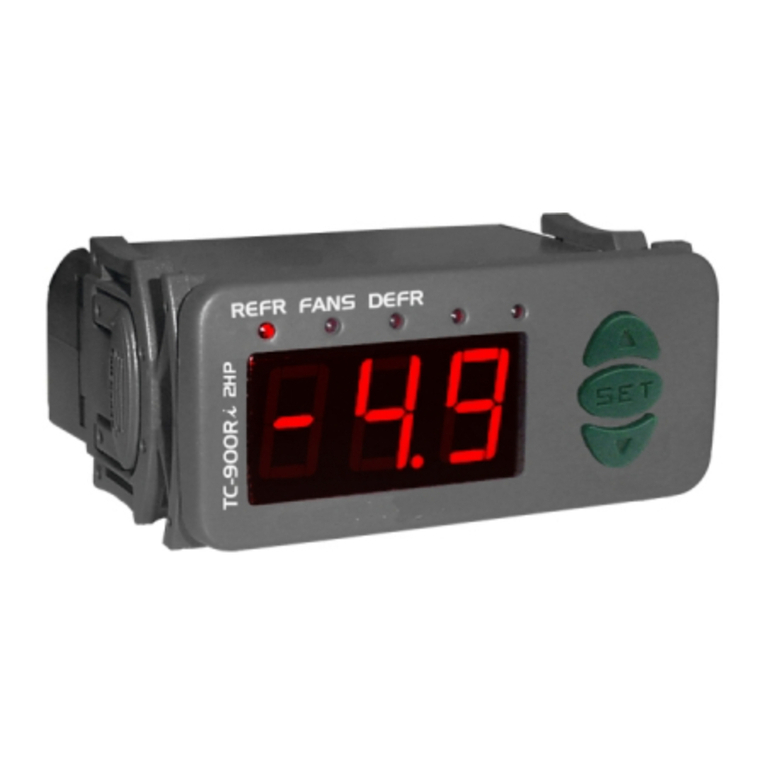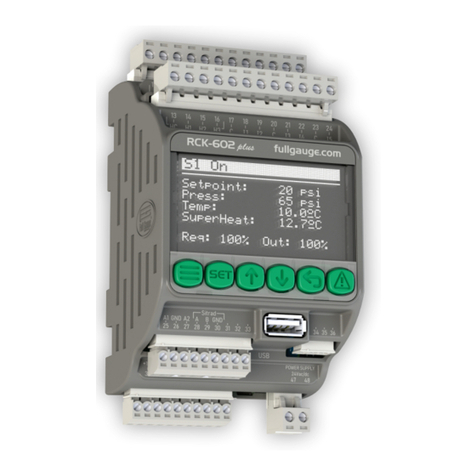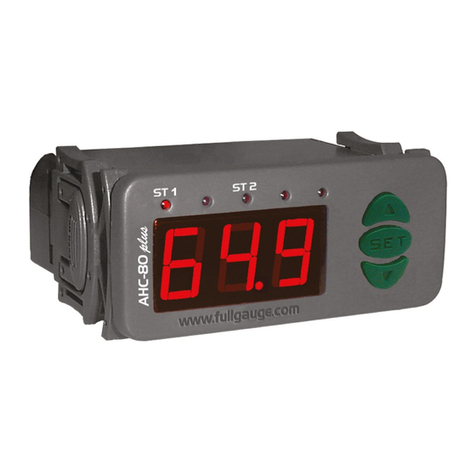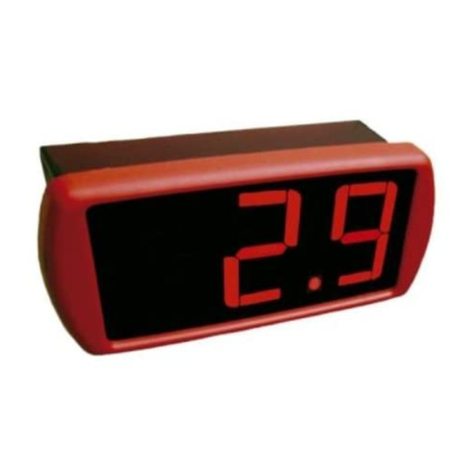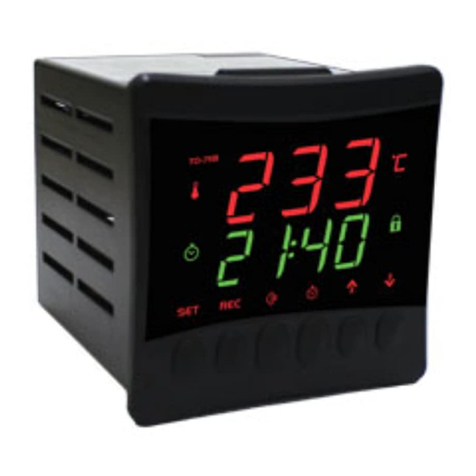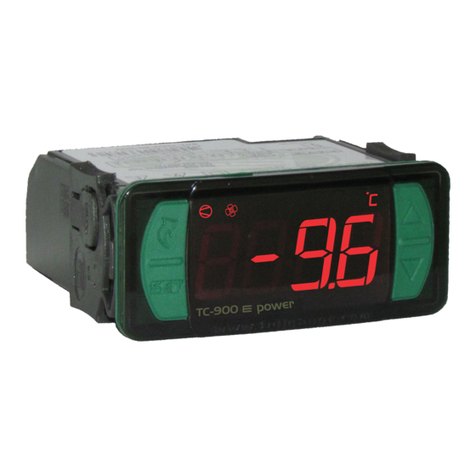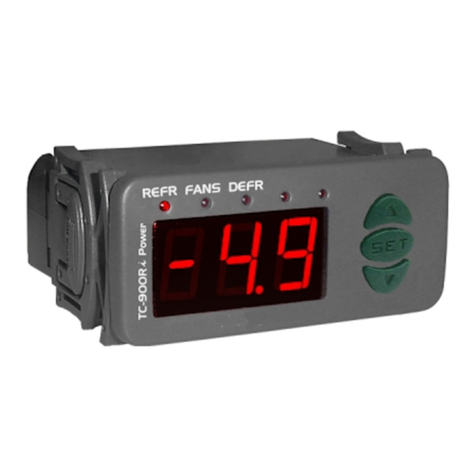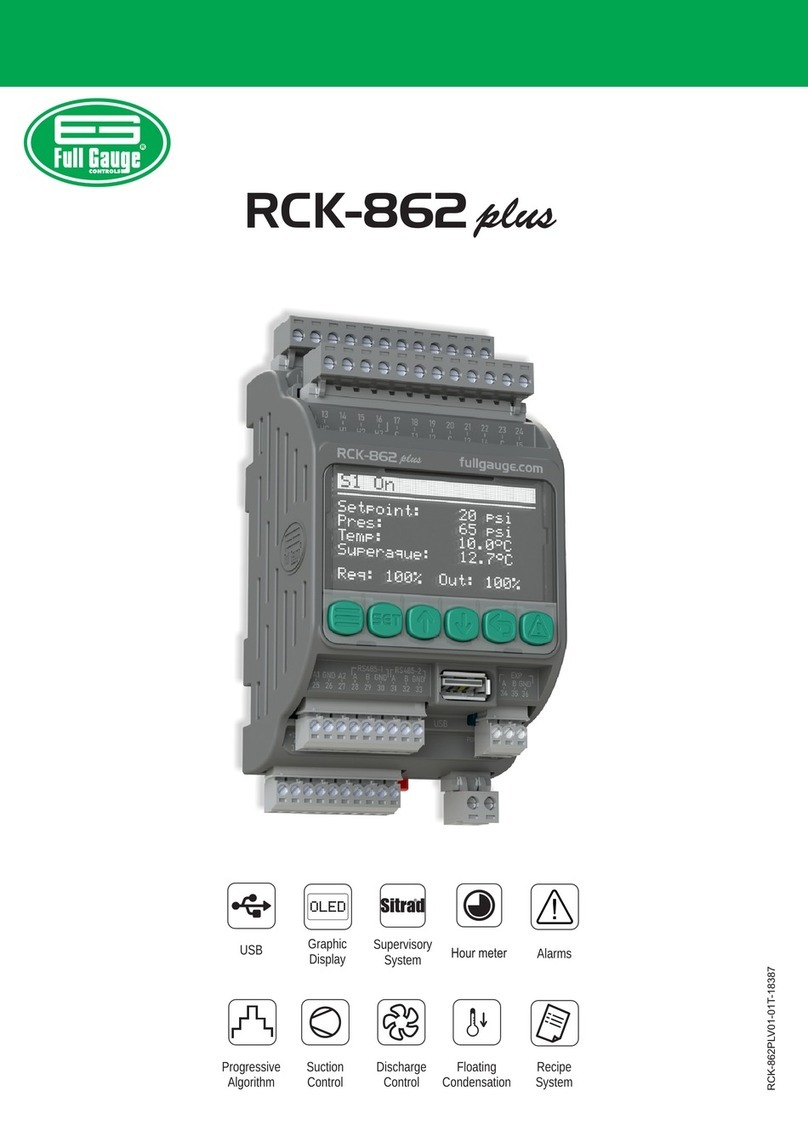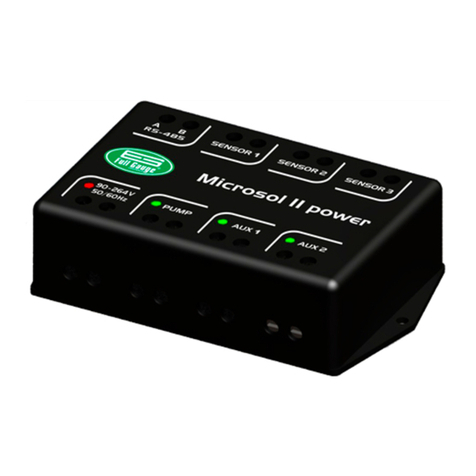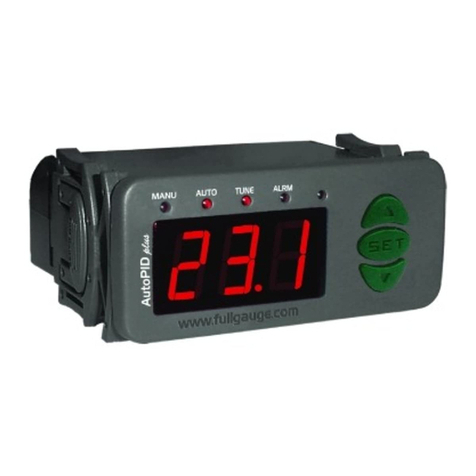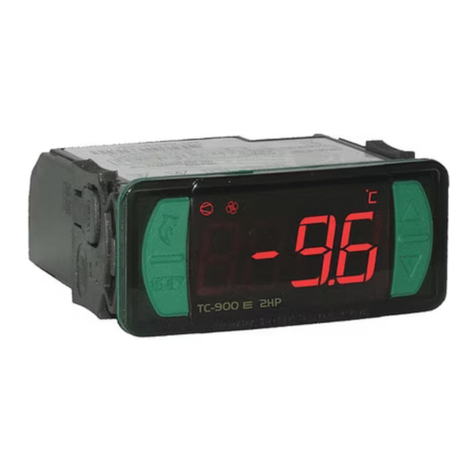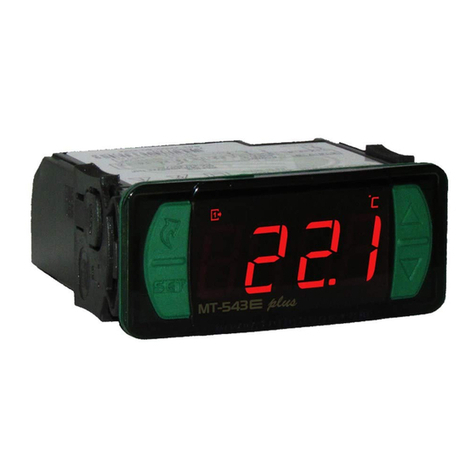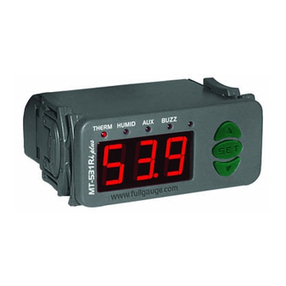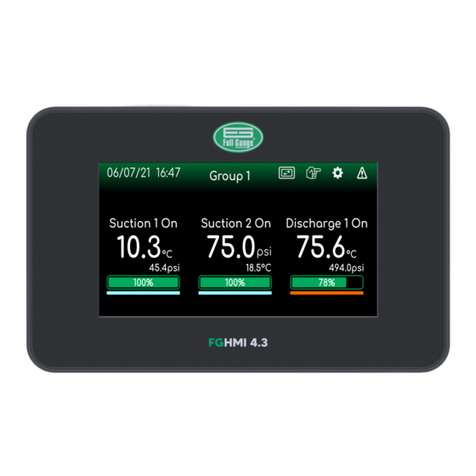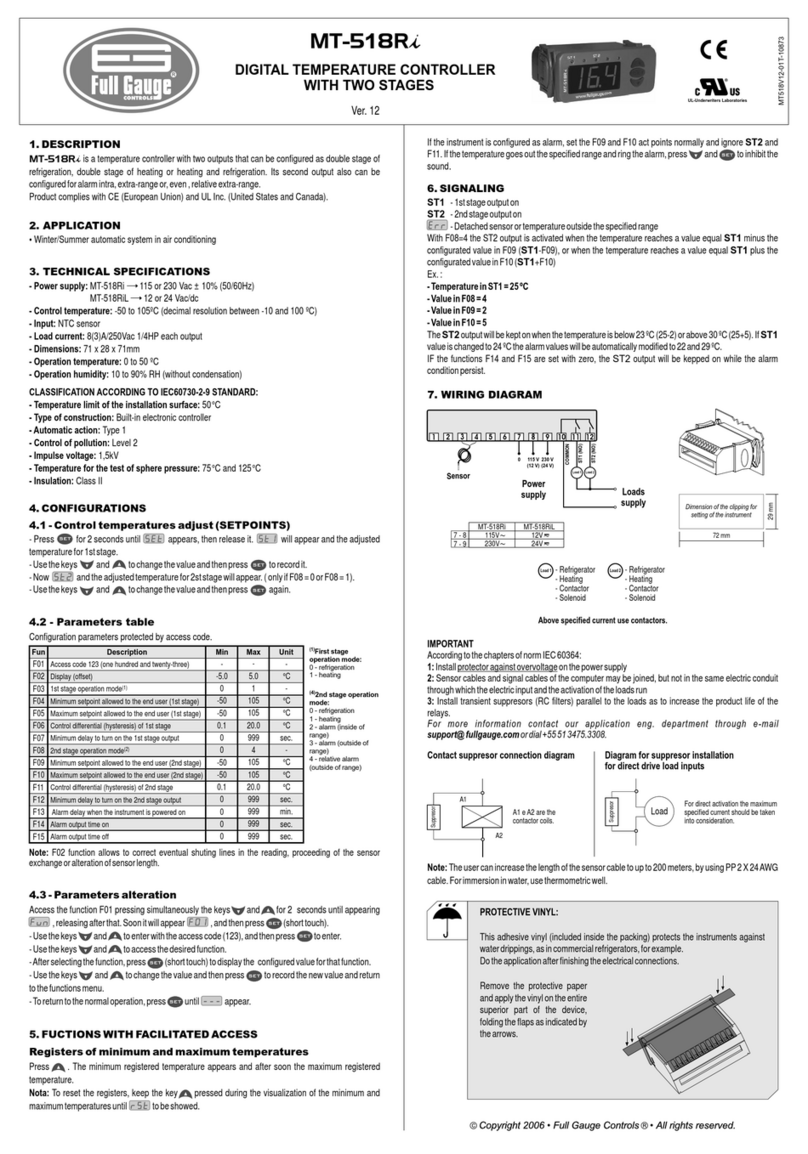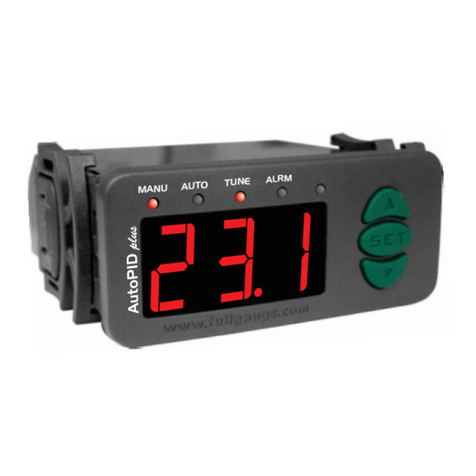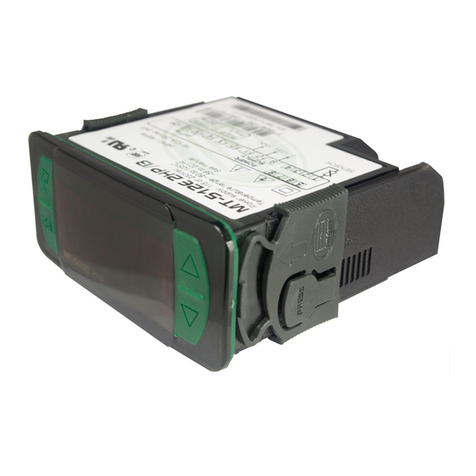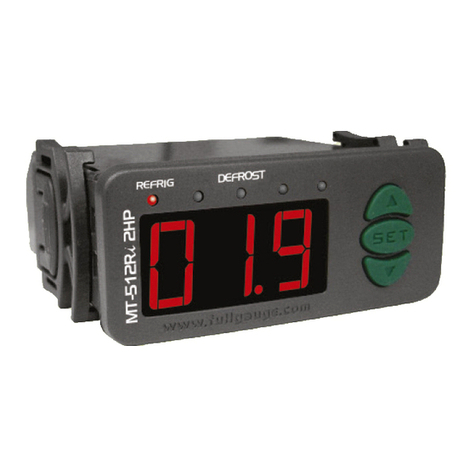
F24 - Cyclical timer on trird stage- time on
It is the time that the timer will be turned on.
F25 - Cyclical timer on trird stage- time off
It is the time that the timer will be turned off.
F26 - Operation mode of cyclical timer
0 - Independent timer
1 - Timer started by the first stage setpoint
2 - First stage linked with cyclical timer (Timer starts on)
3 - First stage linked with cyclical timer (Timer starts off)
4 - Cyclical timer output turned on whenever the the first stage output is turned on
F27 -Operation mode of Buzzer
0 - Intra-range alarm (F28 and F29)
1 - Extra-range alarm (F28 and F29)
2 - Relative extra-range to first stage ( - F28 and + F29), It is considered the absolute
values of F28 and F29).
F28 - Acting point of Buzzer (inferior limit)
It is the inferior value of temperature to the buzzer alarm act as the configured Operation Mode of Buzzer
(F27).
F11 - Control differential(hysteresis) of second stage
It is the difference of temperature(hysteresis) between turn ON and turn OFF the output OUT2.
F12- Minimum delay to turn on the second stage output
It is the minimum time that the output OUT2 will keep turned off, it means, the space of time between the
last stop ant the next start. Only if programmed in F08 = 0 or 1.
F13 - Delay to enable the alarm when the instrument is powered on
During this time the alarm is kept turned off waiting that the system reaches the working control
temperature (only if F08 is set as alarm).
F14 -Reactivation time of alarm when inhibited manually
This function allows three different settings (only if F08 is set as alarm):
- The alarm is inhibited by an indefinite period or until the temperature range in normal
working condition and return the alarm again;
0 - The alarm can not be inhibited by facilitating access keys;
1 to 999 - The alarm will be inhibited during this period (in minutes), returning the call if the alarm
condition persists;
F15 - Alarm time (on cycle)
It allows to adust the time that OUT2 output will keep turned on (only if F08 is set as alarm).
F16 - Alarm time (off cycle)
It allows to adust the time that OUT2 output will keep turned off(only if F08 is set as alarm). To keep the
alarm always activated just set “0” in this function.
F17 - Operation mode of third stage
0 - Refrigeration
1 - Heating
2 - Cyclical Timer
F18 - Minimum setpoint allowed to the end user (third stage)
F19 - Maximum setpoint allowed to the end user (third stage)
Electronic limits whose purpose is prevent that too high or too low setpoint temperatures are regulated.
F20 - Control differential (hysteresis) of third stage
It is the difference temperature (hysteresis) between turn ON and turn OFF the output OUT3.
F21- Minimum delay to turn on the third stage
It is the minimum time that the output OUT3 will keep turned off, it means, the space of time between the
last stop and the next start. Only if programmed in F17 = 0 or 1.
F22-Time base of third stage cyclical timer
0 - seconds
1 - minutes
F23 - Activation time of third stage cyclical timer
This function depends of F26. Every time that the temperature reach the configured value in , the
configured time in this function is respected, to be activated the cyclical timer after. To activate the timer
when is reached just set “0” in this function.
F29 - Acting point of Buzzer (superior limit)
It is the superior value of temperature to the buzzer alarm act as the configured Operation Mode of
Buzzer (F27)
F30 - Buzzer time on
It is the time that the Buzzer will be turned on (cycle on). To turn it off the sonore alarm (Buzzer) adjust the
value “0” to this function.
F31 - Buzzer time off
It is the time that the buzzer will be turned off (cycle off). To turn it off the sonore alarm (Buzzer) adjust the
value “0” to this function.
F32 - Inhibition time of Buzzer during electrical supply
F33 -Reactivation time of Buzzer when inhibited manually
This function allows three different settings:
- The Buzzer is inhibited by an indefinite period or until the temperature range in normal
working condition and return the alarm again;
0 - The Buzzer can not be inhibited by facilitating access keys;
1 to 999 - The Buzzer will be inhibited during this period (in minutes), returning the call if the alarm
condition persists;
It is the time were the Buzzer will kept turned off even if in alarm contitions for a certain period after
startup, because the system has not yet reached working temperature.
F34 -
This filter aims at simulating an increase of the mass of sensor , thus increasing its response time
(thermal inertia). The larger the value adjusted in this function, the longest the response time of sensor.
A typical application requiring this filter is the freezer for ice cream or frozen goods, because when the
door is opened a hot air mass reaches the sensor directly, causing the indication of the measured
temperature to rise quickly and the compressor to be activated
F35 - Network equipment address RS - 485
Each controller connected to the RS-485 network must have its own address different from the others so
that the computer will be able to identify it.
Attention: To avoid communication problems, make sure that there are no controllers with the same
address.
Intensity of the digital filter
7. PARAMETERS ALTERATION
- Access function “F01” by simultaneously pressing keys and for 2 seconds.
When the message appears release the keys and wait for the indication. When the
indication appears on the display press the key and use and to enter the access code
(123) When ready press the button to confirm.
- Use keys and to access the desired function.
- After selecting the function, press (press once quickly) to view the value configured for that
function.
- Use the and keys to change the value and, when ready, press to memorize the
configured value and return to the function menu.
- To exit the menu and return to the normal operation (temperature indication), press (hold it in)
until appears.
SET
SET
SET
SET
SET
6. CONFIGURATIONS
6.1 - Control temperature adjust (SETPOINT)
- Press for 2 seconds until appears ,then release it.
will appear and the temperature will be adjusted for the first stage.
- Use and to change the value and, when ready, press .
- Adjust in the same way (2nd estage) and (3rd stage).
8. FUNCTIONS WITH FACILITATED ACCESS
8.1 Register of minimum and maximum temperatures
Press , appear the minimum registered temperatures. Soon will apears the the maximum registered
temperature.
Note: To reset the registers, keep the key pressed during the visualization of minimum and maximum
registers until to be showed.
OUT 1 - Output 1 turn on
OUT 2 - Output 2 turn on
OUT 3 - Output 3 turn on
BUZZ - Buzzer activated
- Detached temperature sensor or outside the specified range
8.2 Alarm and Buzzer inhibition
To inhibit the OUT2 press the and keys simultaneously .
To inhibit the Buzzer press the and keys simultaneously.
9. SIGNALING
SET
11. SELECTION OF THE SENSOR TYPE
11.1 - NTC SENSOR
It must be connected to the terminals 3 and 4, as showed below:
11.2 - PT-100 SENSOR
It must be connected to the terminals 3 and 4 and with the terminals
3 and 5 interconnected, as showed below:
F01 - Access code (312)
It is necessary when it is desired to select the sensor type.
After entering the code 312, use to confirm. Access the function and select between for
NTC thermistor or for PT100 sensor.
Everytime that a new sensor is selected the parameters must be adjusted.
45
3
2
12
145
3
2
12
1
NTC sensor
45
3
2
12
1
PT-100 sensor
* Sensor supplied with the controller.
* Sensor not supplied with the controller.
Max. Dist.
(AWG) (mm) (meters)
Diameter
14
16
18
20
22
24
26
1.63
1.29
1.02
0.81
0.64
0.51
0.40
18.1
11.4
7.2
3.0
1.9
1.8
1.1
Table of relation, wire
gauge/maximum distance for
two wires PT-100.
10. SELECTION OF THE UNIT (ºC / ºF)
In order to define the unit that the instrument will operate in, enter function “F01” with the access code
231 and confirm with the key. Press the key and the indication will appear.
Press to choose between or and confirm. After selecting the unit the message
will appear, and the instrument will return to the function “F01”. Every time that the unit is changed, the
parameters should be reconfigured, since they assume the “standard” values.
SET
SET
SET
SET
SET
SET
